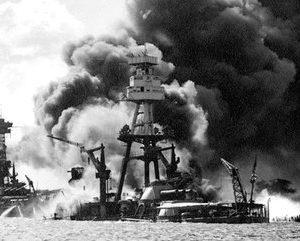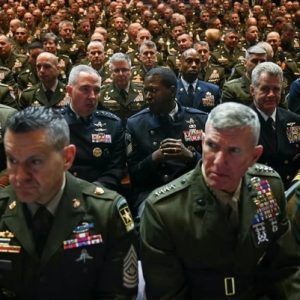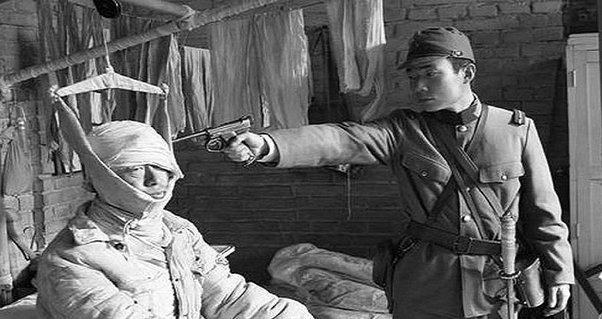
Two Pearl Harbor myths that seem to have real staying power even today.
1 – The US was “lucky” that the aircraft carriers were not in Pearl Harbor on December 7th, 1941.
Not sure how this one got started but it’s been around as long as I can remember. The problem is, that there was little chance that a US aircraft carrier would have been in Pearl Harbor in 1941. It was rare to have one in port and rarer still for two to be there.
In 1941, the US had 7 CV (aircraft carriers), and of those two were operating out of Pearl Harbor. However, Pearl Harbor was not their home port. San Diego was.
So why was it “rare” to have a carrier “in Pearl Harbor”? Well, it was because Pearl Harbor in 1941 was not one of the top bases for the US Navy. It was in fact relatively small and shallow, compared to say, Puget Sound, San Diego, Oakland, or San Pedro. So when one of the pre-war carriers entered the harbor to refuel and restock stores, it created a lot of traffic problems and headaches. The reality was, they got a carrier in and out as fast as possible. If either of the carriers needed a longer port stay, it would return to San Diego, not stay at Pearl Harbor. The bottom line was they were too big for the facility.
Because of these traffic and space issues, the carriers were scheduled in and out to avoid having both needing to refuel at the same time. So the ships worked on a rotating schedule that effectively meant, only one need visit at any given time, and in fact, both were gone the vast majority of the time.
Thus it was the case that “both” carriers would likely have been gone on December 7th. And it was unlikely on any given day that even a single carrier would be there. The Japanese knew it was unlikely they would find a carrier in the harbor when they decided to stage the attack. It was a “nice to” but not expected situation. The primary plan all along was to attack the battleships.
Hence, it wasn’t “luck” it was against the odds that a carrier would have been in Pearl Harbor for an attack. They weren’t there that often because they really didn’t “fit” in a very literal sense.
2 – The Japanese devised a very original and clever plan for how to attack Pearl Harbor, and they were inspired by the British attack on the Italian Navy.
The Japanese attack on Pearl Harbor followed a very meticulous plan, and ironically the attack plan that the Japanese used followed very faithfully a plan created and executed by a US Navy Admiral and the US Navy itself 9 years earlier.
The first Pearl Harbor attack plan and subsequent attack occurred on February 7th, 1932. Rear Admiral Harry Yarnell, was assigned the command of the “aggressor” forces in the annual Pacific Fleet exercises in which mock attacks were planned on US facilities. Yarnell was assigned command of the aggressors who were to attack Pearl Harbor.
The standard approach in 1930 was for the aggressors to send their battleships forward supported by aircraft carriers, cruisers, and destroyers. And the battleships would slug it out.
But for this exercise, Yarnell one of the few believers in the power of naval aviation, decided to “not follow the script” as was custom. He took his fleet to sea but ordered his battleships and cruisers to remain out to sea and maneuver off the coast of California.
Yarnell then took his two aircraft carriers with the destroyers and hid behind/in a series of storm fronts to cover his movement toward Hawaii. The storm shielded his ships from aircraft and he travelled in radio silence.
His plan called for his ships to emerge from the storm early on Sunday morning February 7th northwest of Oahu. From this position, Yarnell sent his aircraft east just past the island, had them hook around to the south and then to the west arriving with the sun behind them as they came in over Diamond Head and into their attack on the anchorage and airfields.
Yarnell had picked a Sunday because he expected to catch the fleet unprepared and napping on what was a “day off”.
Despite the Navy and Army knowing an exercise was in progress his plan worked perfectly. Using flour bags for bombs, the aggressors managed to completely disable the airfields and sink all the battleships in the harbor. The attack achieved complete surprise and was an overwhelming success. The umpires awarded Yarnell forces a total victory and declared the attack completely successful. The ships sunk, and the airfield was completely disabled.
Later, Army and Navy brass complained that Yarnell had “cheated” and it was “unfair” and “inappropriate” to have attacked on Sunday morning, so much so that the result was reversed. But while the Army and Navy brass were whining, it is arguable that others took note.
8 years and 10 months later the Japanese followed a storm to the Hawaiian Island, and on a Sunday morning, emerged from the storm to send their planes east of Oahu to attack out of the sun, against the airfields and harbor. And following Yarnell’s plan precisely they achieved complete and overwhelming success.
I’d like to expose two.
Myth number 1: the war was decided when Germany invaded the USSR, because Germany had neither the manpower nor industrial production to compete with the Soviets. No matter what Allies did, Soviets would’ve won the war.
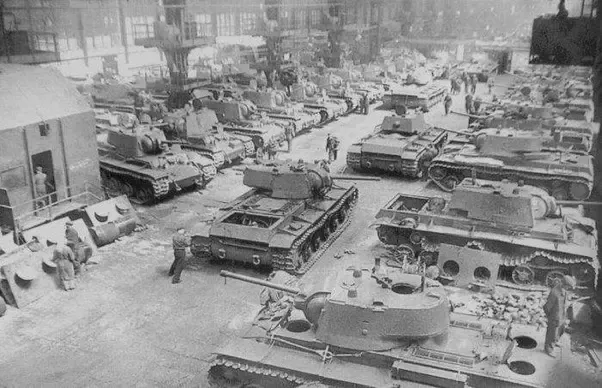
Soviet war industry
First of all I need to mention food. Without American supplies of food (not part of lend-lease and not counted as such) Soviet Union loses the war, period. Soviets starved wholesale even with copious amounts of food aid and hungry armies are dead armies in short order.
If you assume that food reaches the Soviets anyway reality kicks in all over again. You see, the actual reality is Germany not only had the manpower and industrial base to win against the Soviets, it was winning the war of attrition until late 1943. Forget the defeats at Moscow and Stalingrad, so long as every German soldier killed two Soviets Germany was going to win the war in the long run. Stalingrad was a painful defeat sure, but the ratio of losses was exactly where it needed to be: two Soviets for each German. At Kursk the German defeat was a victory in disguise, four Soviets lost for each German, at Moscow it was six to one. The USSR couldn’t sustain this in perpetuity, the country was within months of running out on human flesh for the grinder.
It’s commonly assumed the fact 80% of German war dead on Eastern front is what should be counted. The number isn’t just misleading (it’s 60% total casaulties, injured and captured should count too), it flat out misstates the problem. War dead are the easiest thing to replace, to quote the French national anthem:
S’ils tombent, nos jeunes héros,
La terre en produit de nouveaux,
Or in English:
If they fall, our young heroes,
Will be produced anew from the ground,
Producing more humans to fight is easy and done with minimal government expense. The hard thing is to provide them with weapons and ammunition. The Eastern front only consumed approximately 20% of German industrial output (estimates vary, but none are above 40%) in 1941–45 period, the rest was aimed at the Westen allies. The standard G7a torpedo cost 50,000 RM. The number probably doesn’t tell you much. Let’s put it this way:
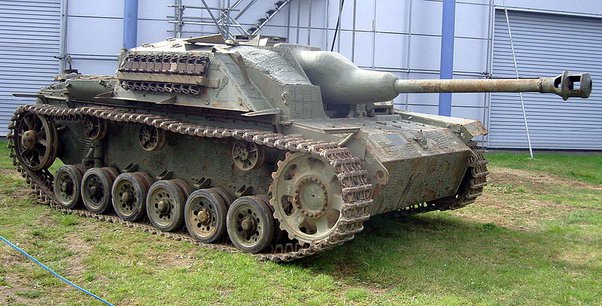
You can have two of these for a single salvo aimed at a convoy, or else a whole platoon for the standard load of a single Type VII submarine, good for a single patrol. There were over 700 Type VII sumbarines in service and many served more than one patrol.
Myth number 2: French plan to win the war was bad and mired in obsolete thinking. No. France had the perfect plan to win the war: build a system of fortifications you can hold with minimal casualties for at least three years. Germany was going to run out of food within two years. Wait until German soldiers are nothing but skin and bones and fight because they fear the firing squad more than your guns, then attack. It should be easy at that point, France had an agricultural surplus and could always import more food from abroad.
French war planning left something to be desired in the plan to hold Belgium in that Belgium didn’t turn out to be the fortress-nation it was in the first world war and in the speed of communication. The strategic plan was perfectly sound however and emphasised French strengths and German weaknesses. Had the Maginot line been extended all the way to the sea Germany would probably concede in 1939.


